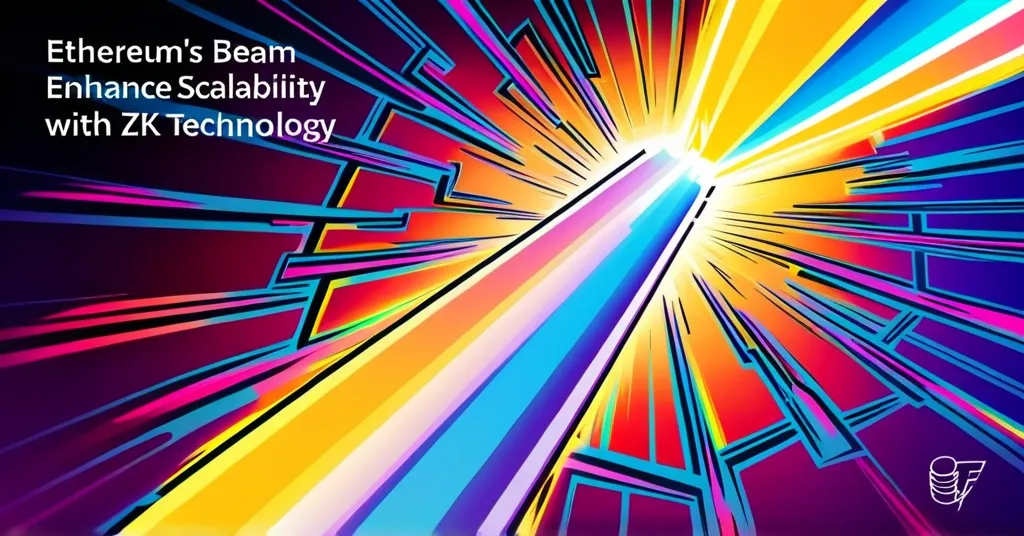Ethereum’s BEAM Initiative Gains Momentum with 8 New Teams for ZK Scalability

Ethereum’s BEAM Initiative Surges Forward with New Consensus Teams
Can Ethereum’s BEAM initiative revolutionize blockchain scalability and efficiency? Ethereum’s ambitious BEAM initiative, designed to enhance its consensus layer with Zero-Knowledge (ZK) technology, is gaining momentum as eight new teams join the effort. This project aims to redefine Ethereum’s scalability, decentralization, and efficiency.
- BEAM initiative enhances Ethereum’s consensus layer with ZK technology.
- Eleven teams, including eight new ones, bring diverse programming languages and focuses.
- Challenges include trademark disputes, funding concerns, and technical complexity.
- Ethereum Foundation provides crucial support through grants and milestones set for 2025.
The BEAM initiative is Ethereum’s latest endeavor to optimize its consensus layer, using ZK proofs—a cryptographic method that allows one party to prove to another that a given statement is true, without conveying any additional information. This initiative could be the key to unlocking Ethereum’s next level of performance, making it a formidable player in the decentralized tech space.
Let’s take a closer look at the teams driving this innovative project forward. Alongside the three existing Ethereum consensus teams—Prism, Lighthouse, and Lodestar—eight new teams have joined the BEAM initiative. Zeam brings a Zig-based approach, focusing on performance optimization. Ream Labs experiments with ZK State Transition and ZKVMs in Rust, aiming to push the boundaries of what’s possible with ZK technology. Quadrivium leverages its experience from Polkadot to develop a C++ implementation, while Nethermind uses its expertise in Ethereum’s execution layer to create a .NET-based client. Lantern targets IoT devices with a C-based client, Lambda Class explores Rust and their Concrete language, Colibri aims for ultra-lightweight solutions for embedded devices, and Afrim, the first African-based team, seeks to expand Ethereum’s reach into emerging markets.
However, the BEAM initiative isn’t without its challenges. Trademark disputes loom large, with some teams potentially needing to rebrand. Funding concerns also raise questions about long-term sustainability, as many teams are self-funded. And let’s not forget the technical beast that is integrating ZK proofs into the consensus layer—a task that requires rigorous testing and no small amount of caffeine. Despite these hurdles, the Ethereum Foundation stands firmly behind BEAM, providing grants and support to accelerate development. This backing is crucial, as the initiative aims to hit key milestones by late 2025, including formalizing the BEAM specification and releasing early prototypes.
The potential impact of BEAM on Ethereum could be significant. By integrating ZK technology, BEAM could reduce transaction validation time, enhancing Ethereum’s performance and scalability. This could also bolster Ethereum’s decentralized nature, ensuring the network remains robust and secure. However, it’s important to consider the potential risks and limitations of relying heavily on ZK technology. While it offers promising solutions, it also introduces new complexities that could affect the network’s stability if not implemented carefully.
Looking ahead, the BEAM initiative could have broader implications for the crypto ecosystem. If successful, it could set a new standard for blockchain scalability and efficiency, encouraging other platforms to follow suit. Yet, the road ahead is fraught with challenges that will test the resolve and ingenuity of the Ethereum community. As we continue to track the progress of Ethereum’s BEAM initiative, the potential for a more robust and efficient blockchain is within reach.
While the BEAM initiative holds immense promise for Ethereum’s future, it’s essential to balance optimism with realism. The crypto world is no stranger to grandiose claims and unmet expectations. As we watch BEAM unfold, let’s remember that the journey to a more scalable, decentralized, and efficient Ethereum will be paved with both triumphs and setbacks.
Key Questions and Takeaways
- What is the BEAM initiative and its goals?
The BEAM initiative is Ethereum’s effort to optimize its consensus layer using Zero-Knowledge technology, aiming to improve scalability, decentralization, and efficiency.
- How many development teams are involved in BEAM, and what are their focuses?
Eleven teams are involved, with eight new teams focusing on diverse programming languages and applications, and three existing teams contributing their existing expertise.
- What challenges does the BEAM initiative face?
Challenges include trademark disputes requiring rebranding, self-funding issues affecting sustainability, and the technical complexity of integrating ZK proofs.
- What support is the Ethereum Foundation providing to BEAM?
The Ethereum Foundation is providing grants and support to accelerate the development of BEAM clients and research.
- What are the upcoming milestones for the BEAM initiative?
Key milestones include formalizing the BEAM specification by late 2025 and releasing early prototypes for testing and refinement.
Stay tuned as we keep you informed on the latest developments in this exciting journey towards a decentralized future.



